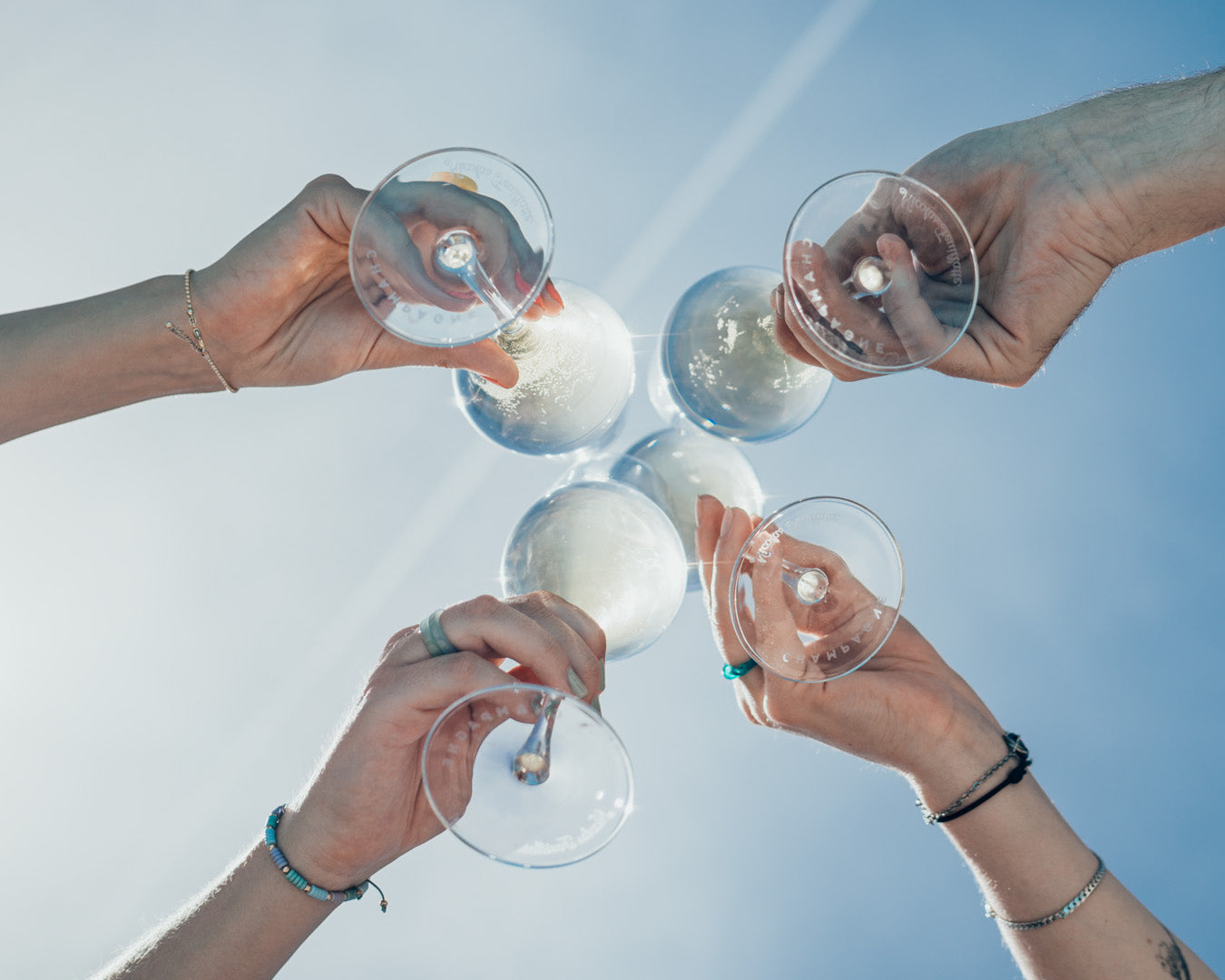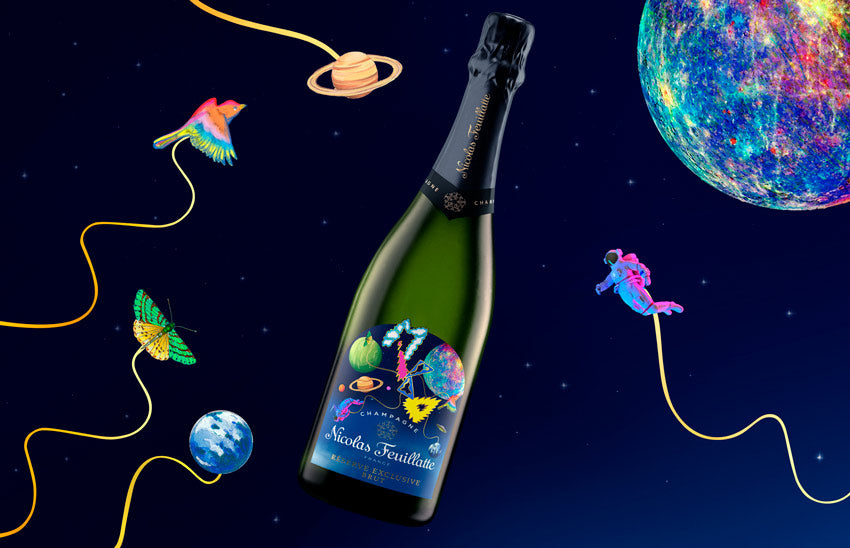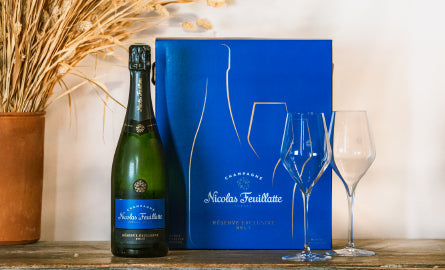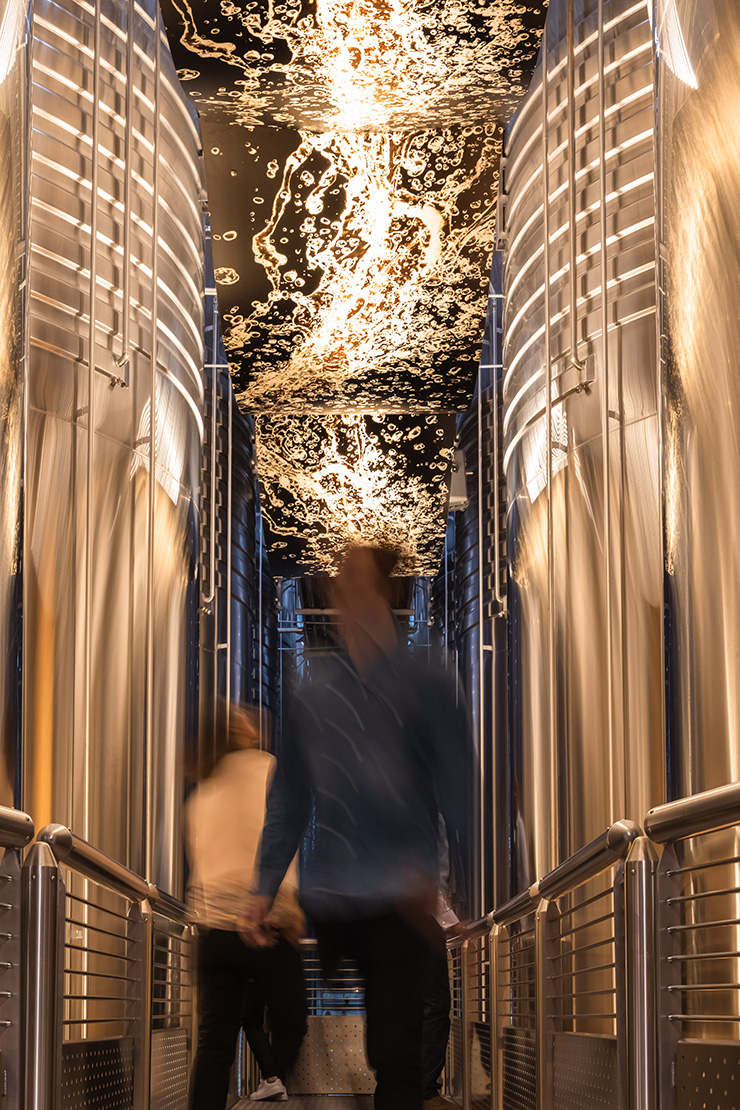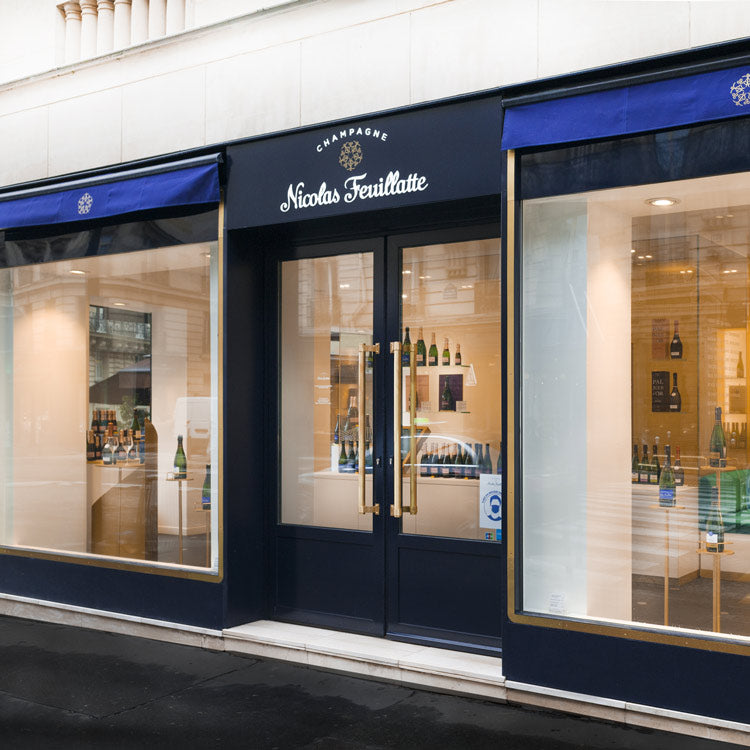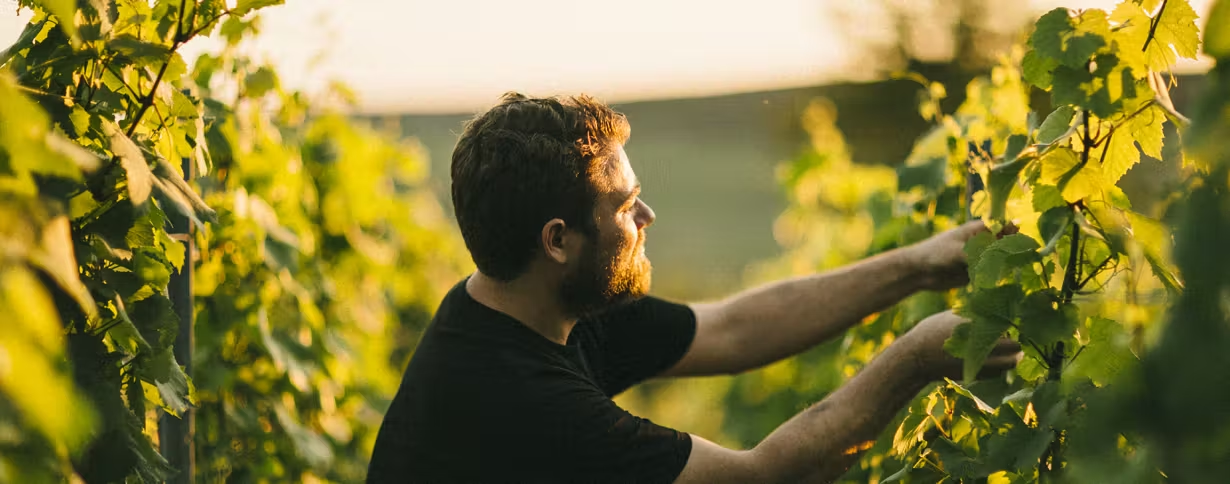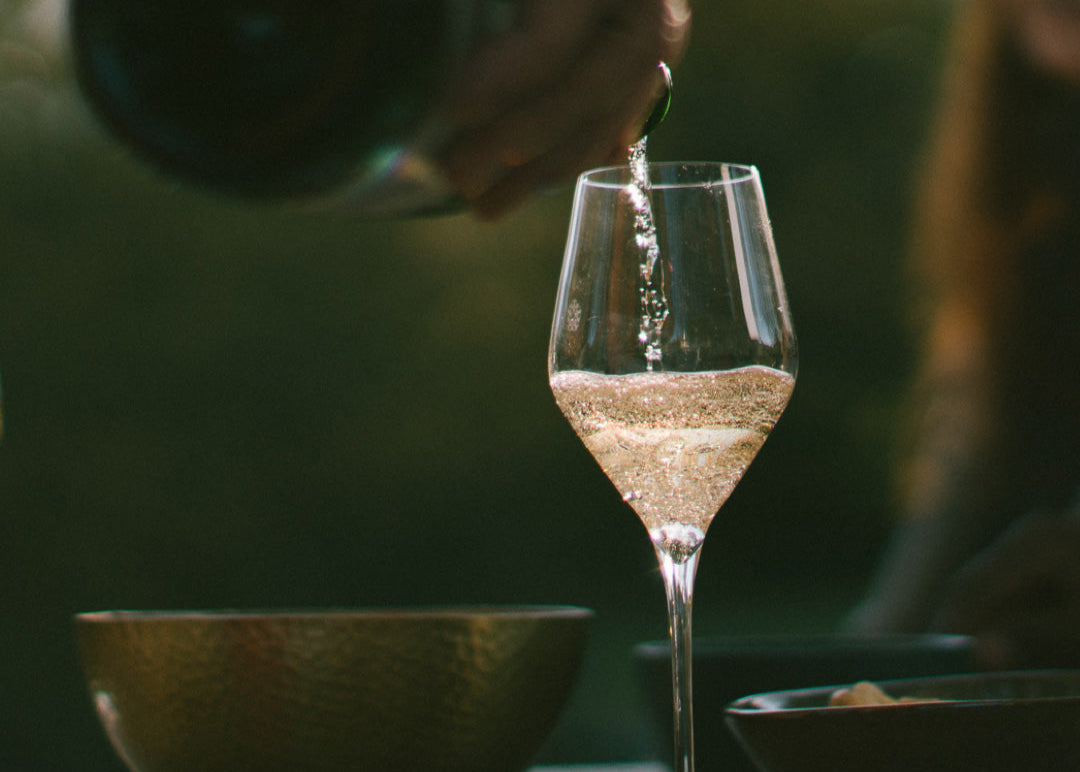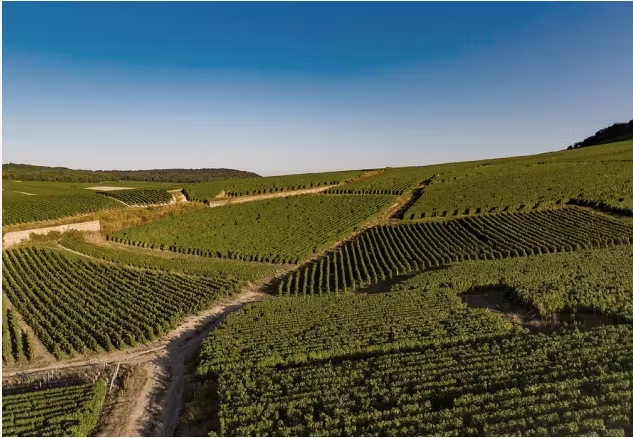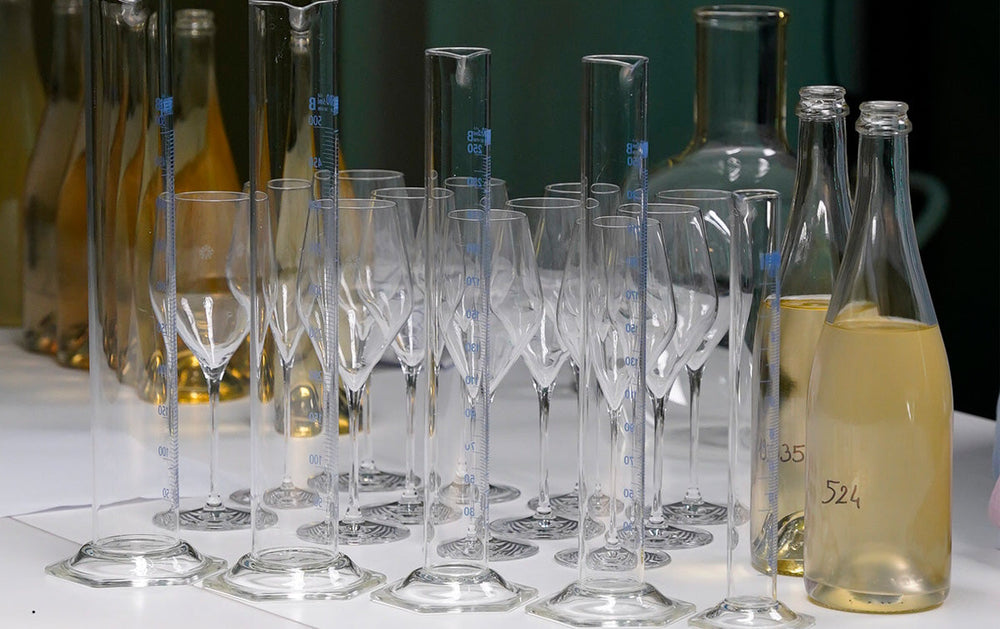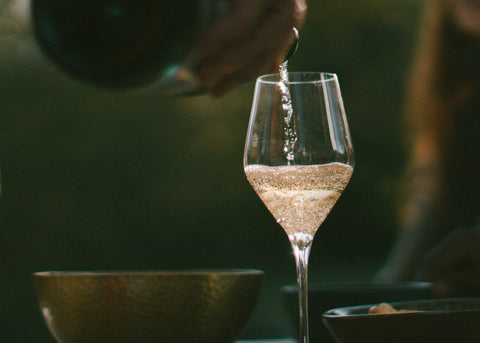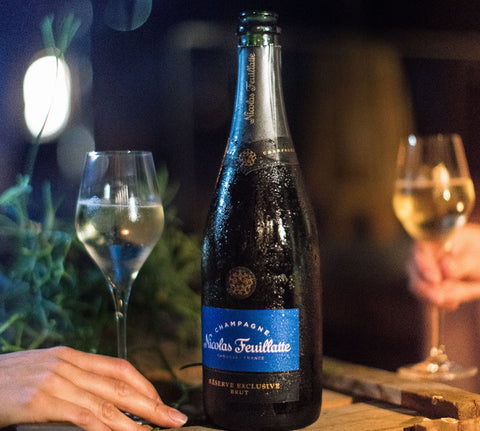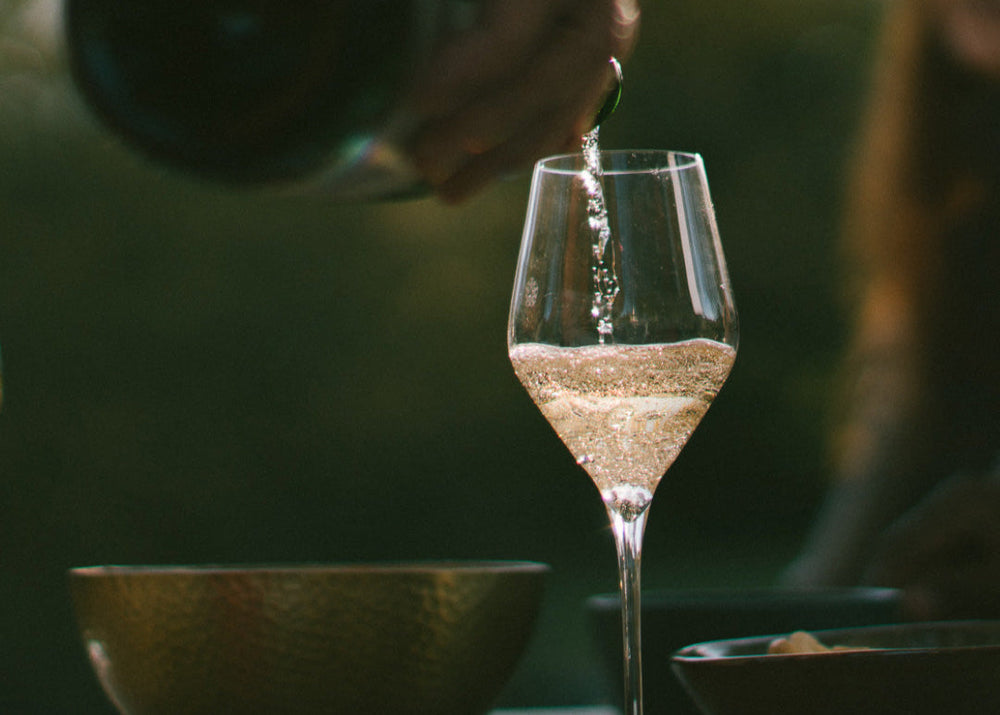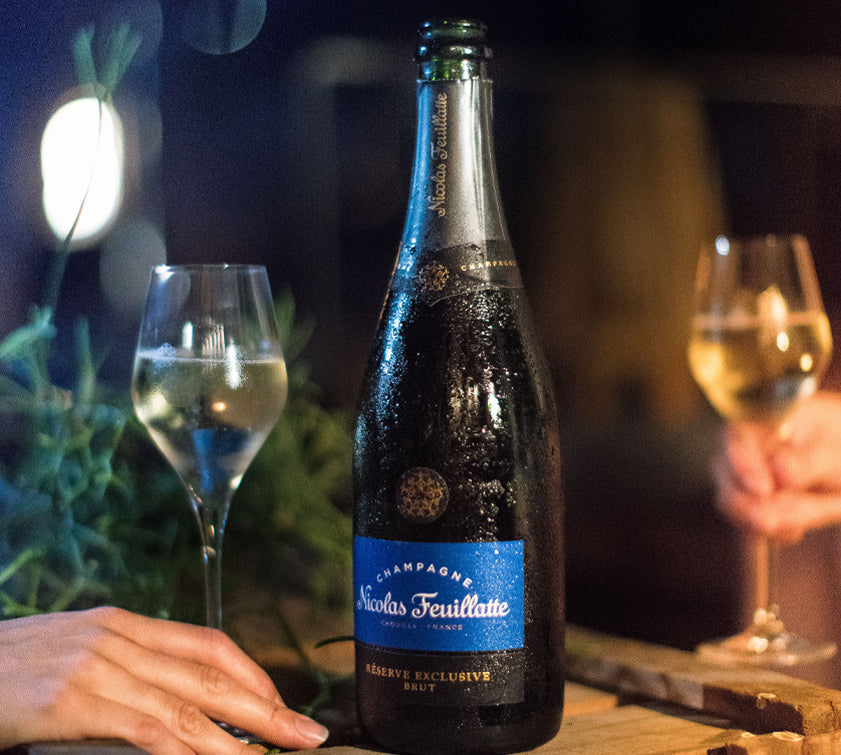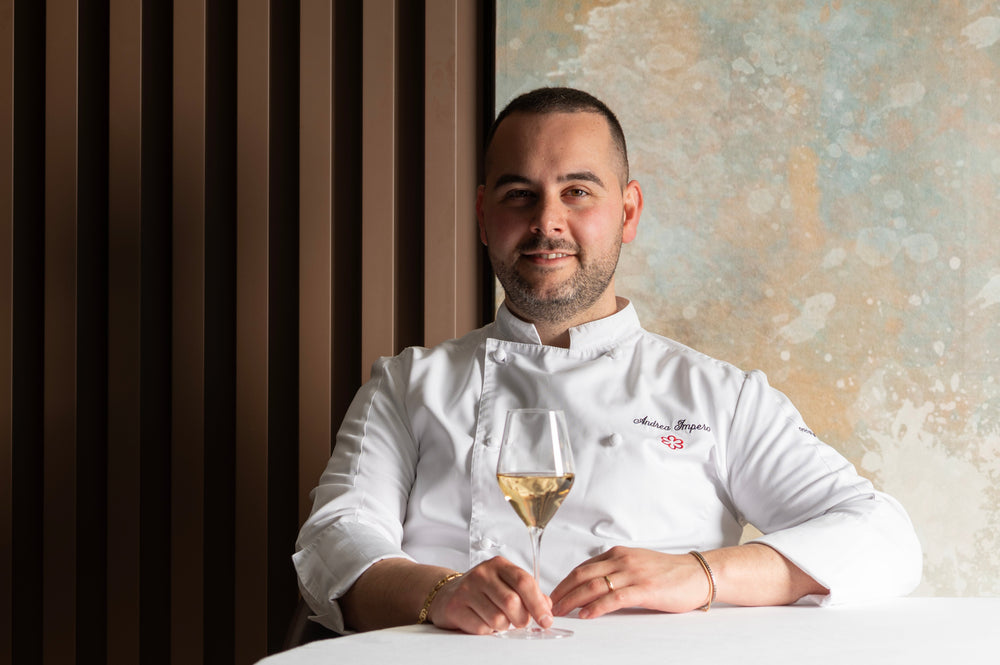Champagne blending is a bit like a House's trademark, its identity. The marriage of the "three royal grape varieties" of Champagne is a delicate and technical operation that showcases local expertise.
The blending of champagne is a bit like the trademark of a House, its identity. The marriage of the "three King grape varieties" of Champagne is a delicate and technical operation that highlights local know-how. Chardonnay, Pinot Noir, Meunier… These three illustrious grape varieties are the DNA of Champagne sparkling wine, three pillars consolidated over time that perfectly express the diversity of our terroir. A blessed land, which gives birth to unique wines, symbols of a certain French Art de vivre.
What are the assembly steps?
Champagne blending is a process punctuated by the necessary steps to achieve a sparkling result. In the production cycle, it takes place between alcoholic fermentation and tirage. With its large vineyards, Champagne boasts atypical and dissimilar terroirs. This variety allows cellar masters a multitude of combinations. In Champagne, blending traditionally occupies a central place, perhaps more than elsewhere.
- To begin with: we discover, test and combine clear wines (or "still"). Clear wines are produced from the first fermentation carried out according to the Champagne method. It is necessary to find the right combination from these unfinished wines. Aromas, aging potential, acidity... We evaluate the annual harvest by looking for its particularities.
- Once the various tests have been carried out, we selects the best combinations. The objective is to achieve a qualitative breakthrough by merging their characteristics. The range of choices makes this task difficult. The skill of the Cellar Master then takes on its full importance, even though he is accompanied by a team of fine connoisseurs. What is the percentage of each grape variety in the blend? The balance is fragile, a clever mix of creativity, experimentation and knowledge of previous vintages.
- Finally, we ensure the consistency between the ranges, the Grands Crus, the Vintages … Once the blending is complete, aging can begin.

Which grape varieties are used to blend Champagne?
All three grape varieties can be used in the blend of a true Champagne:
- Pinot Noir, with its dark-colored grapes, offers excellent production on limestone soils. This grape variety is essential for producing Champagnes powerful, with a characteristic golden dress. Pinot Noir is present in these Champagnes that can be enjoyed throughout a dinner thanks to their body, even with the main course. It brings floral aromas or notes of red fruits.
- Meunier, at the frost resistance well known to producers in cool climate areas. Its original name comes from its white hues and the texture of the leaf, which is reminiscent of flour... It produces champagnes flexible And round, lighter, with marked notes of yellow fruits.
- The famous Chardonnay, emblematic grape variety of the Côte des Blancs which brings freshness to the vintages. Chardonnay is found in bottles with aging potential. Notes of flowers, citrus fruits and a touch of minerality characterize champagnes containing chardonnay. We can even appreciate a side butter.
Vintage Champagnes also result from the blending of these three grape varieties, but with an important precision: all the grapes used for a Vintage are from the same year, exceptional of course! These are rare vintages, sought after by discerning connoisseurs!
Also discover the Champagne Blanc de Noirs, which will revive your taste buds!
Reminder: In Champagne, the "Premier Cru" and "Grand Cru" appellations are linked to a commune, among those offering terroirs conducive to exceptional wines. The price of the grapes is therefore related to the place where they were harvested, with significant differences depending on their classification. Only 17 communes benefit from the Grand Cru appellation. By definition, excellence must remain the exception.
The role of the cellar master in blending
Like the "nose" in the world of perfumery, the Cellar Master is the one who makes the magic happen. His role? Finding the perfect pairings which will make a sparkling wine a great Champagne!
For this, he knows perfectly the taste notes of previous vintages, the specificities of each terroir. A central figure in a House, the Cellar Master is the guarantor of the consistency of the vintages over time. He represents both the memory of an institution, while being the one who provides the impetus for the years to come. At each stage of the development of Champagne, he must bring his know-how, his knowledge of the land... and more generally his talent to find the associations that work: an alchemist of fine bubbles at the service of epicureans!

